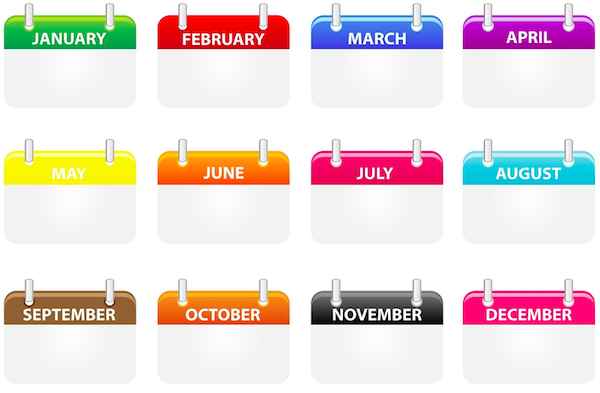· 15 min read
How to Tell a Story with your Analytics Reports
Jacqueline Zenn
Content Crafter at GameAnalytics
Analytics reports or presentations are generally not the most exciting thing ever – after all, they are usually just a bunch of numbers and maybe a few graphs on a page. However, it’s all a matter of perception – data can be really interesting when it’s presented in a compelling fashion. And dare we say even exciting!
What’s more, analytics reports and presentations are some of the most vital documents that you can produce for your business, so you definitely shouldn’t treat them like an afterthought. You just need to learn to make it tell a story – but that’s easier said than done. In fact, for many companies or brands figuring out how to tell that story might be the most complicated part.

On the surface, analytics reports aren’t especially captivating. With rows and columns of data most often delivered in the form of spreadsheets – or fancy graphs if you’re lucky – these documents often lack the creativity and excitement of creative work. But it can be tough to add the engagement factor that sparks expectation and interest and makes your reports memorable.
If that seems like a lot of effort or overly difficult, remember that’s not the data’s fault. After all, that data contains all the results, statistics, trends, and key insights that everyone on the team needs; accordingly, receiving reports and the chance to read, hear, and understand the information therein should be one of the most anticipated parts of any project.
However, in order to tell those stories, you first need to uncover the narrative. Then follow a few steps to create a report or similar document that you can pass on to stakeholders and the rest of your organization or stakeholder audience.
Share this article on Twitter…
[bctt tweet=”How to tell a story with your #analytics ?” username=”GameAnalytics”]
An effective data-based story should express the ideas and concepts it’s meant to convey clearly and accurately, but it should also have the kind of narrative arc that gets its audience excited and enthused about the project and/or the information contained therein. And there are a few steps to follow or components to include if you want to tell a story with your analytics…
- Find the narrative.
- But take care to be objective.
- Point out the negative.
- Tailor it to your audience.
- Set The Stage.
- Connect the story to a real world calendar.
- Filter and vet your data.
- Reiterate your central points.
- End it with marching orders or next steps.
Craft The Narrative
Don’t expect the perfect story to just jump out at you from your analytics dashboard (although that’s definitely possible with some luck and experience). Rather, consider the story that you want to tell and the type of information that you want to share before you start pulling data and stats. And ask yourself some important questions!
- For instance, which key performance indicators are the most important?
- Do you need to make projections?
- Is it more important to zone in on a short period of time when a significant event occurred?
- Or better to cover the lifespan of an app or a yearlong campaign?
- Where did you start and what changed along the way?
Finally, where does the story start and where does it logically end (for this particular reporting period or campaign)? Where do you want to take it in the future? Not only should your narrative have a clear beginning and end, you need to build an internal flow to the report that shows any rises or dips throughout the campaign or time period that are also tied to actual events or reasons why those fluctuations would occur.
Therefore, it might be best to draft the executive summary or sketch out the basic story arc you want to communicate before you start gathering data and putting in the details. Like the best stories, your presentation or report should take the reader on a journey – one that you crafted based upon a broad outline of where you want to take them. You can flesh out the details with individual data points or segments later, but you should start by finding your narrative and crafting an outline that presents the overall story you want to tell with your data.
But Always Be Objective

We’re all capable of falling into the bias trap, no matter how objective we think we’re being. Granted, it’s nearly impossible to get rid of bias completely, but keeping things at least somewhat objective is a pretty essential part of reporting on analytics and data science in general. Which it is so important to check yourself and keep potential bias in mind (and out of your document) when you’re crafting a report.
One of the easiest ways to facilitate an objective point of view is to play to the devil’s advocate with your actual analysis – or to at least project the worst case scenario, or read insights in your data that aren’t 100% positive. It’s even better if you can prove yourself wrong later in the report with different segments or graphs.
It also helps to make sure that your reports or presentations are reviewed by a peer or team member who isn’t as close to the subject as you are – like a writer in love with their characters who wants them to be infallible, an analyst, data scientist, or marketer can become a little involved with their data and lose their objectivity.
Remember that being overly optimistic and avoiding negatives doesn’t really help your cause – especially because your audience will likely hold you to those projections in the future! Why is why you should make sure that you don’t avoid the not-so-positive data or trends that you uncover in your analytics.
Don’t Avoid The Negative

In fact, you should take it even further than pure objectivity by not glossing over the negative. We’d all love to be absolutely perfect and on top of it all the time, but we also all know that’s impossible. Therefore, telling a glowing, overly optimistic story about your game or business’s performance isn’t going to be the ideal presentation for your analytics data. You have to share both sides of the story and include the less than satisfactory KPIs in your presentation.
Therefore, you shouldn’t avoid mentioning KPIs or stats that are trending down or showing negative results. This is actually an important thing to remember for multiple reasons, the first being that if there’s a problem with your game, app, site, campaign, or whatever else you’re reporting on, your audience will likely find out sooner rather than later no matter how well you dress up the data. Eventually, numbers don’t lie.
Moreover, any good narrative arc has a few dips – or even a few antagonists (like competitors, a difficult market, complicated outside events) for our hero (meaning you, your site or app or game) to combat throughout the course of the tale. So any less-than-stellar stats or KPIs might be the perfect elements to fill those roles.
That said, you can still present the negatives in their best possible light by showing what you learned, how you are projecting a shift or improvement, or otherwise turning a negative into a positive in your analysis. This is where the story arc swings upwards!
Consider Your Audience

Who’s the target audience of your analytics reporting and related documents? Is it your boss or manager? Your startup team? Your investors? Your client? What’s their skill level and comfort with technical jargon or complex visualizations? What kind of attention span do they have?
For instance, an executive or C-Suite level audience likely only wants the summary or the most significant and actionable items – they’re probably not even skimming over the details, but rather skipping them altogether. So while the most important parts of your story might be the opening page with the preamble and table of contents and the wrap-up at the end. Think back to your days your school days and writing expository essays with a thesis statement at the beginning and a summary at the end, and do that.
On the other hand, a fellow marketing professional probably will want to dive into the nitty-gritty details. This goes doubly so if your audience is more on the technical side – they’re not going to be interested in just the key learnings of the report or presentation, but the all the variables and activities that led to the results in the document.
All of these considerations matter when you’re crafting your analytics narrative. It’s not enough to just deliver a compelling story, it has to be told in a way that both appeals to your target audience and provides them the information that they need to make smart decisions and move forward in the right direction.
Finally your story should be told in a way that makes your stakeholders feel good about their ability to comprehend and understand the information being transmitted. The best stories are ones that the audience can easily share and re-tell, passing the message on to others.
Set The Stage

Like any good story, your presentation or report needs a setting. To be more exact, in this case the setting is the time(s) and place(s) that your data is drawn from. After all, the narrator or protagonist’s perspective is an important part of any story – it gives the audience an idea of their hero’s mindset and goals. And in the case of your analytics report or presentation, sharing where and how you got your data and any other relevant background information is how you give your audience the proper insight into your mindset.
While in this case, the “time” should be correlated to your marketing calendar or the real world calendar (or both – more on that in the next section), the “place” or the rest of the setting should include any background information that’s pertinent to your business/app/game.
For example, descriptions of your overall marketing strategy, the channels you are targeting and the tactics you are using, any user personas you have created or demographic information you have on your audience, and anything else that may have influenced the data and corresponding analysis in your document should be included as a way of setting the scene.
This background information is perhaps most likely to be useful placed after the executive summary, or included as an appendix if your audience is already familiar with your business, e.g. if this report is a regular document or one chapter of a longer story, put this at the end. On the other hand, if it’s a one-off, put it after the executive summary for greater visibility.
Connect Your Narrative To Your Overall Marketing Calendar

We’re all used to following a calendar for marketing activities and essentially everything else in our lives. So it makes perfect sense to use your marketing calendar, the real world calendar, or any combination of the above as a timeline for your analytics presentations.
Accordingly, any trends, spikes or dips, or other analytical anomalies or interesting observations should all be tied to real world happenings. After all, it’s not enough to just share KPIs and report on stats and performance – you have to illustrate them by tying them to real world events or happenings. And what better way to do that than to correlate them to a calendar (whether it’s a real world calendar or a campaign timeline, or a combination of the above)? Plus it makes for a nice, easy-to-understand flow for your presentation.
Using a calendar structure can also be a good way to create a timeline for your narrative – the story arc for your analytics tale, so to speak. That will make it easier to write or tell, and more importantly easier for your audience to understand – after all, we’re all used to linear timelines in general, so using a standard calendar progression as you take your audience through a report or presentation is a logical choice.
Filter And Vet Your Data

It’s easy to just download a few reports or check out a few segments from your analytics dashboard, but that doesn’t make for an accurate or useful analytics document. You have to organize your metrics, properly vet your sources, and make sure you’re filtering out the outliers or irrelevant data. It’s not enough to just create an interesting or memorable story, you have to make sure that it’s based on data-driven or numerical truths. Think of this part of the process as a combination of precision and inspiration.
Some of this is a matter of simple data hygiene, of course, but it also requires applying the right mental lenses or filters to the information you’re parsing. This is where your attention to detail, knowledge of the technology that you’re using, and your unique skill set as an analytics professional is your biggest asset – anyone can view data or basic reports, but it takes an educated and nimble mind to turn those numbers into a compelling story that not only resonates with your audience, but can be considered an actual asset to your stakeholders.
After all, precision plus inspiration are the key elements of an excellent report or presentation no matter what the purpose; moreover, these ingredients make for a correct, compelling and memorable story to go along with your data. And “correct” might be the most important word in the previous sentence – without properly scrubbing, filtering, and otherwise vetting the data that forms the core or foundation of your report or presentation, the whole story becomes suspect. Fairy tales and fantasy stories are great, but restrict those to the actual game you’re reporting on, not your analytics!
Reiterate Your Central Points

There’s a reason that executive summaries are considered the most important part of nearly any business document, and that’s because they (hopefully) contain the objective, key learnings, and most important action items. Therefore, your executive summary should be pretty simple – think a couple bullet points or a few paragraphs that tell your story or communicate your message in an effective and compelling way that’s supported by real world data straight from your analytics.
And you may need to repeat it – since the executive summary is typically placed at the beginning, it’s important to repeat the key messages at the end (especially if your report or presentation is particularly lengthy). Conclude on a strong not with a recap of the main points as well as the next steps or action items – end it with an eye towards the future.
Conclude With An Eye Towards The Future

Like any good story, you need a strong – and hopefully happy – ending. And in the case of analytics reports or presentations, you need to wrap it up and tie with a bow in the form of a summary (even if it’s a repeat of the executive summary at the beginning) and the next steps or action items for your audience.
In fact, these two things might be the two most important parts of your analytics story – the ability to take your audience down a path that is memorable, engaging, and inspires follow-up action as well as provide them with key takeaways, next steps, and action items.
? Further Reading: 50 essential KPIs to help measure the success of your mobile app or game
In Summary…
To recap, in order to tell a story with your analytics, you need to:
- Find the narrative.
- But take care to be objective.
- Point out the negative.
- Tailor it to your audience.
- Set the stage.
- Connect the story to a real world calendar.
- Filter and vet your data.
- Reiterate your central points.
- End it with marching orders or next steps.
In the spirit of this advice, your marching orders from this story are to make your next analytics report or presentation more compelling by making the data tell a story by following the steps laid out in this article. And of course, in order to tell a story with your analytics, you need to collect the data to begin with – which is where Game Analytics can help.
And the key message to recall? Now that you’ve (hopefully) captured and analyzed all this information, there’s really only one thing that you need to remember – that storytelling might actually be the oldest trick in the book.
After all, telling stories is humankind’s oldest way of transmitting information and sharing their experiences; but it’s often overlooked in more science or innovation-driven fields (like data science, game development or pretty much anything that falls into the STEM category). Which only makes the art of storytelling extra valuable for people in the analytics realm. Now there’s the real moral of this story – learn to tell a good data-driven story and it will serve you well in innumerable and unexpected ways. Now go forth and create!
Share this article on Twitter…
[bctt tweet=”How to tell a story with your #analytics ?” username=”GameAnalytics”]
Did we miss anything? Let us know on Twitter!